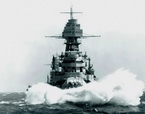DanNC
Posts: 15
Joined: 9/2/2011
Status: offline

|
StrategyPage.com had an updated post today about Indian MIG 21s. http://www.strategypage.com/htmw/htatrit/articles/20131215.aspx
quote:
Since the 1960s India bought nearly a thousand MiG combat aircraft. Nearly 90 percent (872) were MiG-21s and 55 percent (482 aircraft) of these were lost in action (mainly accidents) along with 171 pilots. The other ones, swing-wing MiG-23s were more modern but not much more reliable. While India was something of an extreme case in this area (other users don't fly their MiGs as much), it's been typical of MiG aircraft.
What is interesting is the accident rate per 100,000 hours.
quote:
But India was not the only one, besides the Russians, who had problems with Russian made warplanes. During the Cold War the U.S. had several dozen Russian aircraft they used for training their fighter pilots. Despite energetic efforts to keep these aircraft flying their accident rate was 100 per 100,000 flying hours.
That's very high by U.S. standards. The new F-22 has an accident rate of about 6 per 100,000 hours, mainly because it's new. F-15s and F-16s have an accident rate of 3-4 per 100,000 flight hours. India, using mostly Russian aircraft, has an accident rate of 6-7 per 100,000 hours flown (compared to 4-5 for all NATO air forces). The B-52 has the lowest accident rate (less than 1.5 per 100,000 flying hours) of all American heavy bombers. The B-1s rate is 3.48.
quote:
For example, in the early 1950s, the U.S. F-89 fighter had 383 accidents per 100,000 flying hours. A decade later the rate was in the 20s for a new generation of aircraft. At the time the F-4, which served into the 1990s, had a rate of under 5 per 100,000 hours.
While aircraft generation and age has an effect on accident rates, lack of pilot training seems to have been/is a problem:
quote:
Most of the pilots lost in these Indian MiG-21 accidents were new pilots, which pointed out another problem. India has long put off buying jet trainers. New pilots go straight from propeller driven trainer aircraft to high performance jets like the MiG-21. This is made worse by the fact that the MiG-21 has always been a tricky aircraft to fly. That, in addition to it being an aircraft dependent on one low quality engine, makes it more understandable why so many MiGs were lost. And a lot were lost. The recently retired MiG-21FLs were used to help pilots get used to MiG-21s before going to a MiG-21 squadron.
Later,
Dan
|
 Printable Version
Printable Version











 New Messages
New Messages No New Messages
No New Messages Hot Topic w/ New Messages
Hot Topic w/ New Messages Hot Topic w/o New Messages
Hot Topic w/o New Messages Locked w/ New Messages
Locked w/ New Messages Locked w/o New Messages
Locked w/o New Messages Post New Thread
Post New Thread